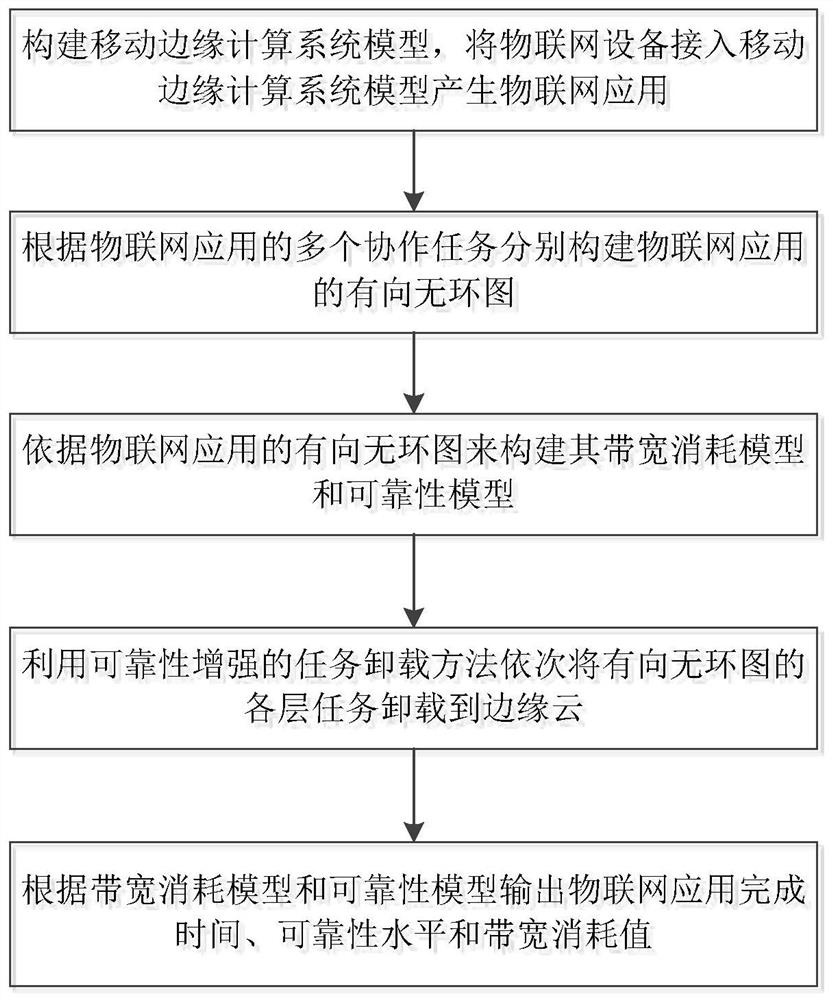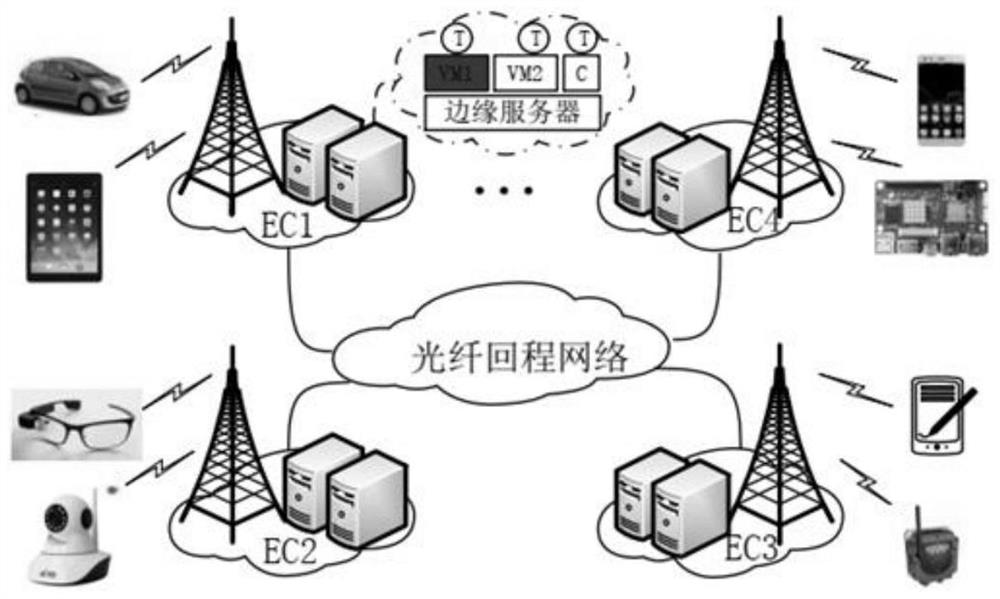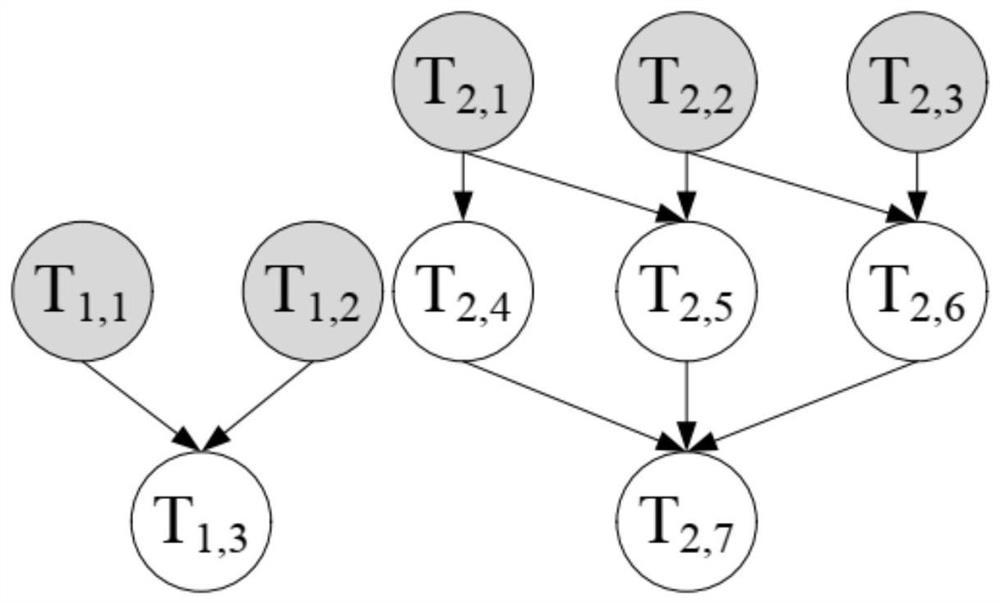Reliability-enhanced mobile edge computing task unloading method
An edge computing and reliability technology, applied in computing, program control design, program loading/starting, etc., can solve the problems of maximizing reliability and minimizing bandwidth consumption of IoT applications at the same time
- Summary
- Abstract
- Description
- Claims
- Application Information
AI Technical Summary
Problems solved by technology
Method used
Image
Examples
Embodiment Construction
[0052] The following will clearly and completely describe the technical solutions in the embodiments of the present invention with reference to the accompanying drawings in the embodiments of the present invention. Obviously, the described embodiments are only some, not all, embodiments of the present invention. Based on the embodiments of the present invention, all other embodiments obtained by persons of ordinary skill in the art without making creative efforts belong to the protection scope of the present invention.
[0053] like figure 1 As shown, the embodiment of the present invention provides a mobile edge computing task offloading method with enhanced reliability, and the specific steps are as follows:
[0054] Step 1: Build a mobile edge computing system model based on the edge cloud, and connect IoT devices to the mobile edge computing system model to generate IoT applications. The IoT applications include multiple collaborative tasks; figure 2 As shown, the mobile...
PUM
 Login to View More
Login to View More Abstract
Description
Claims
Application Information
 Login to View More
Login to View More - R&D
- Intellectual Property
- Life Sciences
- Materials
- Tech Scout
- Unparalleled Data Quality
- Higher Quality Content
- 60% Fewer Hallucinations
Browse by: Latest US Patents, China's latest patents, Technical Efficacy Thesaurus, Application Domain, Technology Topic, Popular Technical Reports.
© 2025 PatSnap. All rights reserved.Legal|Privacy policy|Modern Slavery Act Transparency Statement|Sitemap|About US| Contact US: help@patsnap.com



